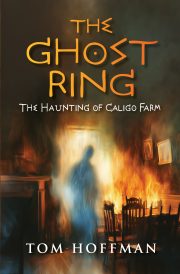Don’t Forget the H
by Tim Waggoner
The horror genre is undergoing a renaissance these days, with audiences devouring popular and critically acclaimed books, movies, and television series. If you’re a science fiction or fantasy writer who’d like to add more horror to your authorial toolbox, but you’re not quite sure how to go about it, you’re in luck, because that’s what this article is all about.
A lot of people’s views on horror have been shaped by slasher films, simplistic predator-stalks-prey stories with lots of blood and sex. But the genre of horror performs some very important functions for its audience beyond providing simple scares. Horror is a way for us to face our fears and come to terms with death and the “evil” in the world. Through horror, we explore, confront, and (hopefully) make peace with our dark side. And as a particular benefit for writers, horror can add a different level of suspense and emotional involvement for readers in any story.
Good horror is internal more than external. Horror stories are reaction stories. They’re not about monsters or monstrous forces as much as how characters react to monsters (or to becoming monsters themselves). Horror also thrives on fear of the unknown, so you should strive to avoid standard horror tropes such as bloodthirsty vampires or demon-possessed children, or rework them to make them more original and impactful for readers. Maybe your vampire is a creature that feeds on people’s memories, or maybe your possessed child is an android created to be a child’s companion who’s desperately trying to repel a hacker’s efforts to take over its system. Reworking a trope — dressing it in new clothes, so to speak — allows you to reclaim the power of its core archetype while jettisoning the cliched baggage it’s picked up over the years.
One of the ways current creators are refreshing horror tropes is by using them to make incisive social commentary. In his novel Mongrels, Stephen Graham Jones uses the archetype of the werewolf as a metaphor to explore the lives of Native Americans living in a culture dominated by people of European descent. In the film Get Out, Jordan Peele employs the archetype of the Frankenstein-like mad scientist to comment on white culture’s dehumanization and exploitation of Black people. In his Netflix adaptation of The Haunting of Hill House, Michael Flanagan’s characters are as haunted by their own past of family dysfunction as they are by the spirits of the dead. And the film Jennifer’s Body, written by Diablo Cody and directed by Karyn Kusama, explores feminist themes through a monster-movie lens.
There are some horror tropes, however, that are based in racist, misogynist, and ableist stereotypes. The primitive non-white savages who conduct unspeakable rites to dark gods. The uncivilized backwoods stalkers, eager to kill educated, sophisticated urbanites (a trope wonderfully parodied in the film Tucker and Dale vs Evil). Women who exist solely as objects of abuse and torture. Physically scarred and disabled characters such as the Hunchback of Notre Dame and the Phantom of the Opera. Used as is, these tropes only perpetuate harmful stereotypes, but when turned on their head, they can make extremely effective stories, as in Victor LaValle’s novella The Ballad of Black Tom, which subverts the racism in Lovecraft’s Cthulhu Mythos, and Ari Aster’s film Midsommar, which upends the woman as helpless victim trope.
To create an atmosphere of horror, the simplest technique is to describe the physical setting in a way that makes it scary. But just as effective — if not more so — is detailing the mental and emotional aspects of the setting. Shirley Jackson does both in the famous opening paragraphs of her novel The Haunting of Hill House. You can also present the experience of the setting by filtering the description through a particular character’s point of view. Show your characters experiencing the horror. Stay in the moment. Take a page out of Stephen King’s playbook. I once read an interview where King said he comes up with ideas by looking at an object, person, or place and thinking, Something is wrong here — very wrong. You can do the same thing in your stories, whether the something wrong is literal, figurative, or exists solely in the imagination of your viewpoint character. Describing the rising of two moons in the sky of a distant planet? Maybe the moons are normally a pale orange, but for some reason, they’re now almost bloodred. Does your character hear what sounds like whispering on the wind in a language she doesn’t recognize?
In horror, the characters are often under the threat of physical violence, injury, and ultimately death. But the mental, emotional, and spiritual wounds characters suffer can be far worse than physical pain. In King’s Salem’s Lot, Father Callahan’s faith falters during his confrontation with the master vampire Barlow, and Barlow forces the priest to drink some of his unholy blood. Later, when Callahan attempts to enter his church, he receives a painful shock of divine energy. He is now barred from the house of his god. The physical pain Callahan experiences is nothing compared to the emotional and spiritual pain — the horror — of realizing what his lack of faith has cost him. And in the movie Poltergeist, the parents’ terror upon being confronted with the ghostly entities haunting their house pales beside the knowledge that their youngest daughter has become trapped within the spirits’ dimension. The parents aren’t afraid for themselves. They’re afraid for Carol Anne and what might be happening to her on the Other Side.
Whether you use horror as the main course, a side dish, or a little seasoning now and then, it’s a versatile ingredient that has quite a kick, and — when used right — can be highly satisfying for readers. So don’t be afraid to get a little scary now and then.
Critically-acclaimed author Tim Waggoner has published over fifty novels and seven collections of short stories. He writes original dark fantasy and horror, as well as media tie-ins, and he’s recently released a book on writing horror fiction called Writing in the Dark. He’s won the Bram Stoker Award and been a finalist for the Shirley Jackson Award, the Scribe Award, and the Splatterpunk Award. He’s also a full-time tenured professor who teaches creative writing and composition at Sinclair Community College in Dayton, Ohio.


